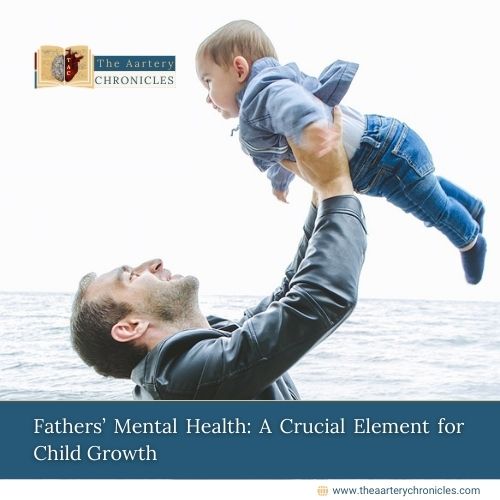

From Giggles to Health: The Significance of Laughter
Introduction
Laughter is the aim of the World Laughter Day, helping people to express their joy and maybe participate in some special yogic laugher classes. This day, starting in 1998, is a time to acknowledge the fantastic accomplishments of Dr. Madan Kataria, an Indian health professional, who is renowned for his pioneer work. A connection between facial expressions and emotions formed the groundwork upon which laid Laughter Yoga techniques. The World Laughter Day is no doubt, the global envoy to this movement which works on a key principle of laughter as a means of improving the whole health of a person
Why World Laughter Day is celebrated?
It falls on the first Sunday in May of every year, i.e. World Laughter Day day. In 1998 it launched to demonstrate that the art of having a good laugh is the key to experience wellbeing and transmit good feelings world wide. Laughter, however, is reputed to deliver a myriad of benefits to a human being’s emotional and physical health. This day is just to encourage people to come together for spreading Joy around.
Health Benefits of Laughter
Laughter is crucial for overall well-being, offering numerous physical, mental, and emotional benefits:Laughter is crucial for overall well-being, offering numerous physical, mental, and emotional benefits:
- Stress Relief: When laughing through the mouth, the endorphins-the body’s natural feel-good agents-are released. This inhibits the secretion of stress hormones like cortisol which accordingly is the factor for those relaxed and calmness feelings.
- Improved Mood: Laughing has the effect of putting someone in a good mood, besides making one feel joyous and full. For example, it can cushion states of depression and anxiety by eliminating negative thoughts and getting a person look at the bright side of life.
- Enhanced Immune Function: It is indicated that laughing can indeed improve the immune system through the enhancement of immune cells and production of antibodies. That acts as a preventive measure as to allow the body to fight off diseases and infections.

- Pain Reduction: Laughing effect has been proven to be a painkiller for people, by releasing endorphins that provide increased tolerance for pain. It can be used as a kind of natural analgesia and may be as effective as certain pharmaceutical therapies for pain management.
- Cardiovascular Health: Using the example of laughter, it is demonstrated that it can raise cardiovascular condition by increasing the rate of blood flow, dilating the blood vessels and lowering the pressure. This could lead to a lower risk of heart disease and strokes in the long run.
- Emotional Resilience: Through laughing at the issues despite having very challenging times, emotional resilience and coping skills can be constructed. It also enables individuals to manage their emotions during difficult moments and recover from versets much better.
- Quality of Life: Fundamentally, a comfortable mood results from more exercise, a brighter mood, and less stress, all benefits of a happier emotional state. That is perhaps one of the most significant tools for self-care and while it should be a habit that is done every day, the latter needs to be optimised.
What is laughter yoga?
Laughter Yoga is a unique practice since it binds yoga exercises with breathing in a unique fashion. The concept was created by Dr. Madan Kataria in the year 1995 in India.
The premise is simple: the sensation of laughing is spread as a kind of sporting activity in a friendly atmosphere, with no necessity to have funny or witty things.
The session participants undertake all types of laughter activities and playful exercises in order to encourage natural laughter, asserting that it can offer similar benefits to natural laughter prompted by humor.
Rapidly Growing Health Trends
The movement which is amongst the most rapidly growing health trends that has gained popularity among many people across the world owing to the fact that it offers various health benefits like reducing stress and improving mood, promoting the immune function and improving overall well-being. Laughter yoga is also used both medically and emotionally in many aspects such as in hospitals, schools, office wellness programs and various mental health facilities.
Complementary Therapy in Psychotherapy
Laughter yoga partially is used as the alternative approach jointly with traditional therapy methods in psychotherapy. Among others, it may let clients put their own emotions in order, build their self–confidence, and look on life through the other side of the spectrum. Social involvement between laughter yoga session members generates relationship and care among the involved people which really improves the therapeutic value.
Health Benefits of Laughter Yoga
Studies on full laughing yoga give forth encouraging evidences reducing to a large extent symptoms of depression, anxiety, and chronic pain together with enhanced quality of life of people facing health conditions. It falls in the category of joyful yoga that is full of pleasure and a tried and tested way of achieving the physical, emotional, and social well-being.

How laughter helps in Maintaining Social Relationships?
Laughter plays a crucial role in improving social relationships in several ways:
- Bonding: Humor becomes a language for peers to communicate with and as a result, a sense of community is developed. It makes a group of people have something in common which encourages each other to gather together, and leads to a delightful mood.
- Communication: Laughter has created a universal language that has no borders in terms of culture or language. It can therefore be a contributing factor to build up a good communication by transmitting positive emotions that stimulate connecting, friendship, and friendship, which finally results in a more pleasant and meaningful conversation.
- Relaxation: Among the many things that make people laugh, laughter affects biological processes on various levels. The first is the relaxation and tension relief effect that laughing has on our bodies. This is a great asset as the rhythms let the walls break down and lead to more relaxed interaction thereby easing engagement and bonding.
- Trust: Often genuine laughter is taken to be an expression of reality and respect. When people laugh together, they tend to feel more relaxed and confident about each other’s presence, and this is the good vibe that is needed to build strong and healthy relationship on friendship.
- Positive reinforcement: Humor creates the healthy cycle in which laughing fortifies good behavior and mental attitude, and as a result more and more people have fun and feel good by socializing. It generates a virtuous circle , in which more laughter leads to still greater laughter until it becomes a mechanism for bringing through positivity and reinforcing each other in a social circle.
Undoubtedly, laughter acting as a social lubricant is in many ways powerful because it makes relations better, allows people bond, and gives a sense of unity. Living laughter and practicing the art of laughter in the company of people can result in social interaction that is deep and fulfilling, and bonds that stretch to the distance.
Conclusion
Finally, World Laughter Day is an inspiring celebration bringing laughter to people’s lives everywhere. It shows the power of laughter as a shame overcomer, bond strengthener and healer. In addition to that, laughter yoga which is stress buster by combination of laughter exercises and yogic breathing continues to spread its laughter and happiness throughout the world. Today we take pride in the healing and transformative power of laughter. Let us not only appreciate this unique day, but also make it our inspiration to incorporate more laughter into our lives. We can start this effort right now, to be able to build a happier and more connected world for all.





